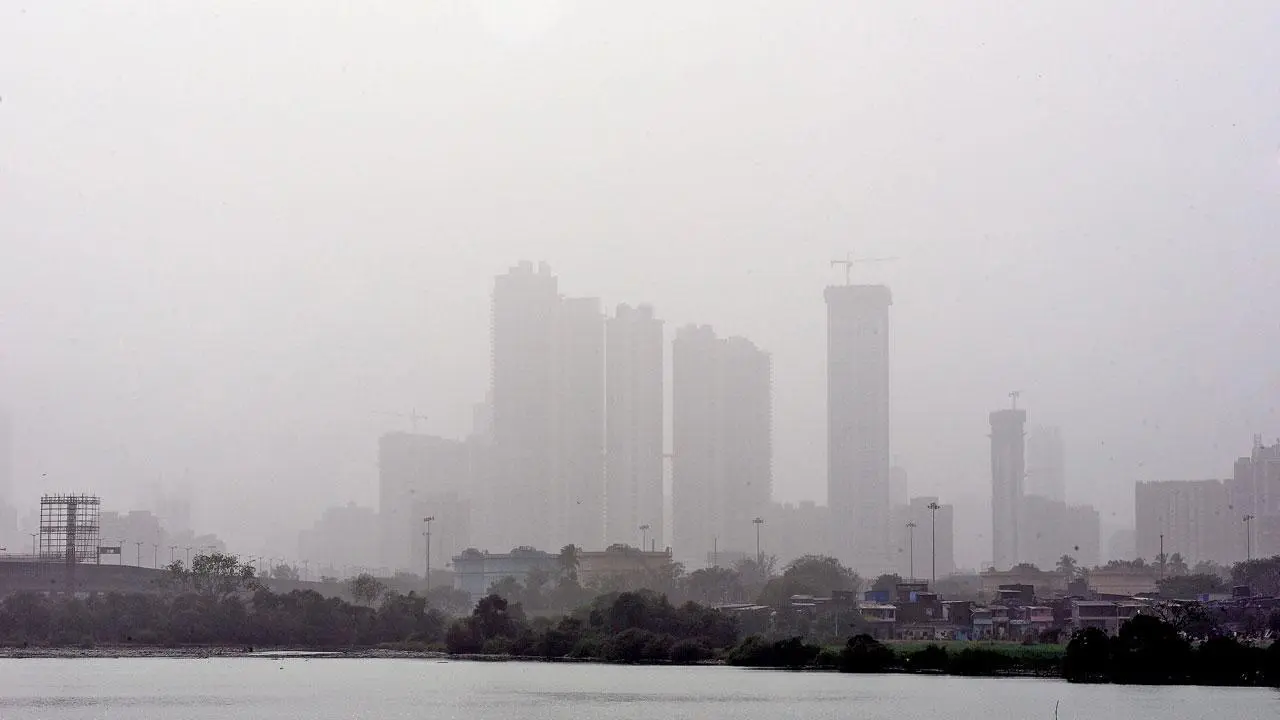On May 13th, 2024, Mumbai, India’s financial capital, witnessed a dramatic shift in weather. A powerful dust storm unexpectedly struck Mumbai, causing significant disruptions to transport, the uprooting of trees and structures, and widespread power outages across numerous districts of the financial capital. As the dust tempest engulfed the city, the sky became obscured, and individuals shared images of it on social media. Amid a brisk sky, airport services, a segment of the metro network, and local trains were temporarily halted. As per the reports, the scorching heat gave way to a sudden and intense dust storm, accompanied by the season’s first showers. While the rain brought relief from the oppressive temperatures, the storm’s fury left a trail of destruction.
Amidst a lowering sky, local trains, a portion of the metro system, and airport services were momentarily suspended. This event, though brief, highlighted the city’s vulnerability to extreme weather and underscored the need for improved infrastructure and disaster preparedness.
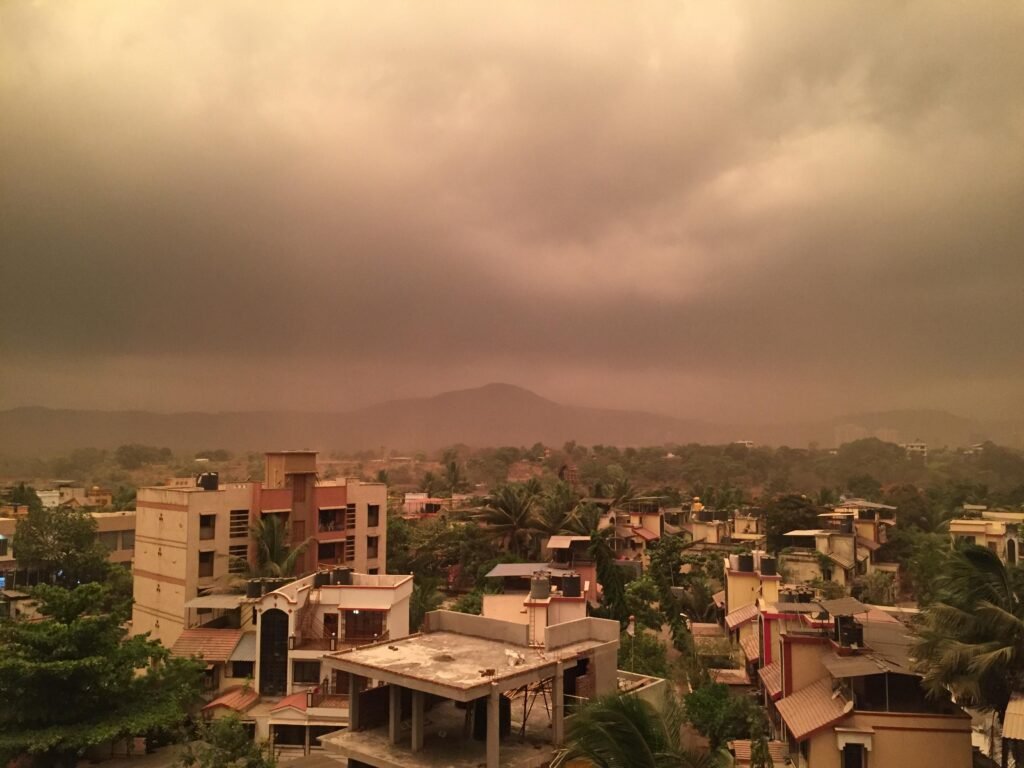
Behind The Storm: Causes and Conditions
Mumbai’s dust storm in 13th May wasn’t a random occurrence. Several factors converged to create the perfect conditions:
- Pre-Monsoon Season: May marks the beginning of the monsoon season in India. This period often sees erratic weather patterns, with strong winds and sudden dust storms being relatively common.
- Dry and Loose Soil: The land surrounding Mumbai, especially towards the west, is prone to desertification. This dry, loose soil becomes easily airborne during strong winds.
- Urban Heat Island Effect: Mumbai, a densely populated metropolis, creates an urban heat island effect. This phenomenon occurs when heat gets trapped within the city due to reduced vegetation and increased concrete surfaces. The heat difference between the city and surrounding areas can create strong winds, further intensifying the dust storm.
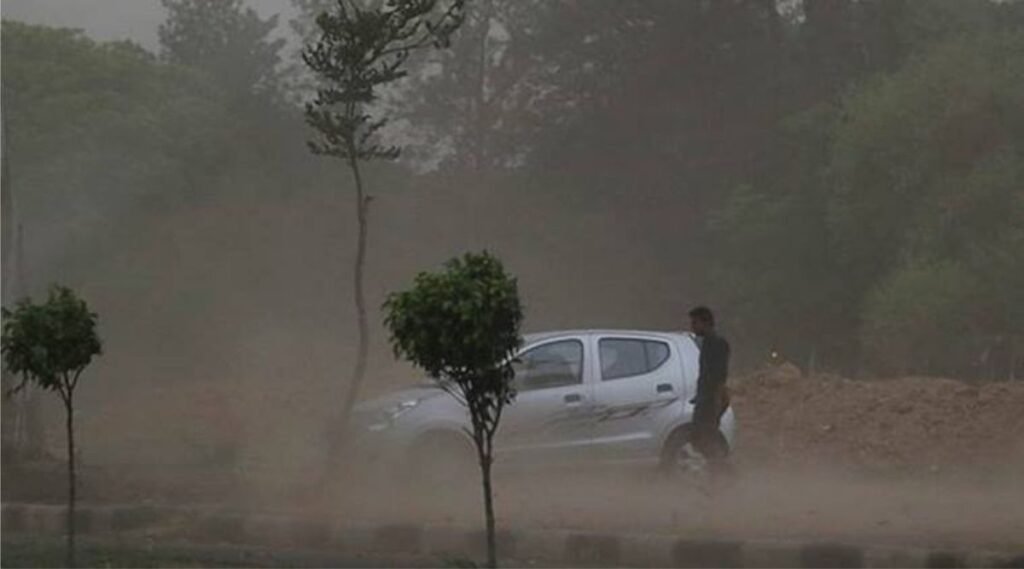
Beyond the Dust Storm: Impact and Devastation
The impact of dust storm was far-reaching. Here’s a closer look at the damage caused:
Loss of Life: The most tragic consequence was the collapse of a large billboard in Ghatkopar, a Mumbai suburb. The storm’s strong winds uprooted the billboard, which then crashed onto a petrol pump, killing 14 people and injuring over 60.
Infrastructure Damage: The high winds caused widespread disruption. Trees were uprooted, power lines snapped, and several temporary structures were damaged.
Transportation Chaos: Flight operations at the Mumbai airport were suspended for nearly an hour due to low visibility caused by the dust. Local train services were also delayed, and traffic snarls became widespread as commuters rushed for shelter.
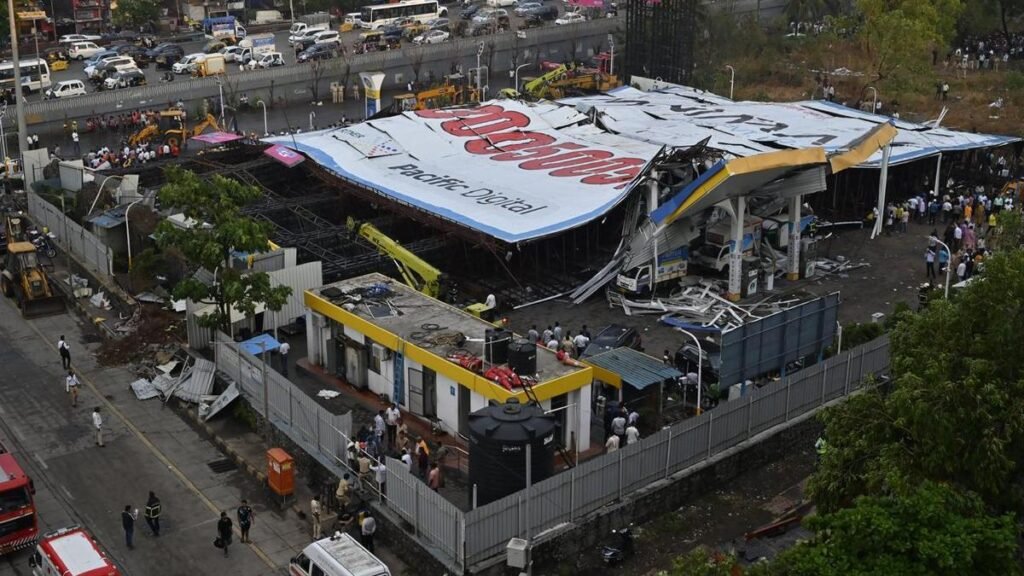
A City Unprepared?
The Mumbai dust storm exposed the city’s vulnerabilities in dealing with extreme weather events. The tragic billboard collapse raises questions about lax regulations regarding the safety and maintenance of such structures. Additionally, the city’s infrastructure, particularly its power grid and transportation network, seemed unprepared for the sudden onslaught.
The gas station was across from the billboard. Images depict the building collapsing in the centre of the filling station. The city authorities are investigating if the billboard advertising business was authorised to erect the structure.
Several cars at the gas station had their roofs torn off by the billboard’s metal frame.
Teams from the National Disaster Response Force (NDRF) are reportedly at the scene searching for survivors who may be buried beneath the rubble, according to the police.
Eknath Shinde, the chief minister of Maharashtra, stated that the government would handle the injured parties’ medical care and that saving lives is the first concern. “The families of those who have passed away will receive Rs 5 lakh. “I have instructed the relevant authorities to inspect all of these hoardings in Mumbai,” Mr. Shinde stated.
A “Orange” alert has also been issued by the weather department for a number of other Maharashtra districts, including Pune, Satara, Sangli, Nashik, Kolhapur, Ahmednagar, Aurangabad, Jalna, and Parbhani. Over the next 24 hours, there’s a chance of light rain or thundershowers in the evening or at night. About 35°C will be the maximum temperature and 28°C will be the lowest, according to a post on X from the Regional Meteorological Centre (RMC).
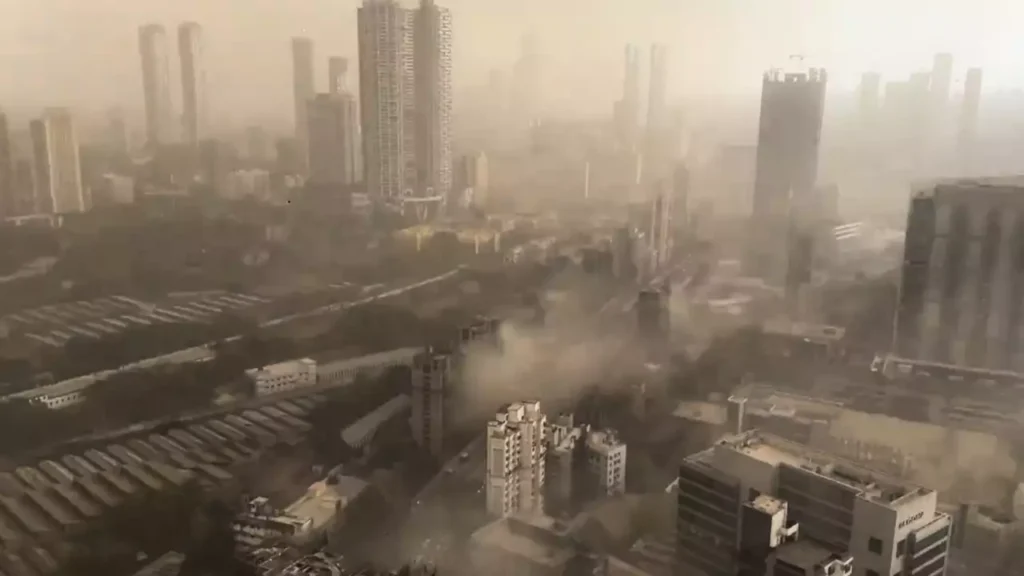
Looking Ahead: Building Resilience
In the wake of this event, several key takeaways can guide Mumbai towards greater resilience:
- Strengthening Infrastructure: A critical focus should be on strengthening existing infrastructure, especially power lines and communication networks, to withstand strong winds.
- Disaster Preparedness: Mumbai needs a robust disaster management plan with clear protocols for communication, evacuation, and emergency response during extreme weather events. Public awareness campaigns on safety measures during storms and dust storms are crucial.
- Environmental Management: Long-term solutions require addressing factors like desertification and the urban heat island effect. Planting trees within the city and promoting sustainable urban planning practices can help mitigate the intensity of future dust storms.
Conclusion: A Learning Experience
The May 13th Mumbai dust storm served as a stark reminder of the power of nature and the city’s vulnerability. While the initial shock subsides, the focus should shift towards recovery, learning from the event, and implementing long-term measures to build a more resilient Mumbai. The city’s ability to adapt and prepare for future extreme weather events will determine its ability to thrive in the face of a changing climate.











